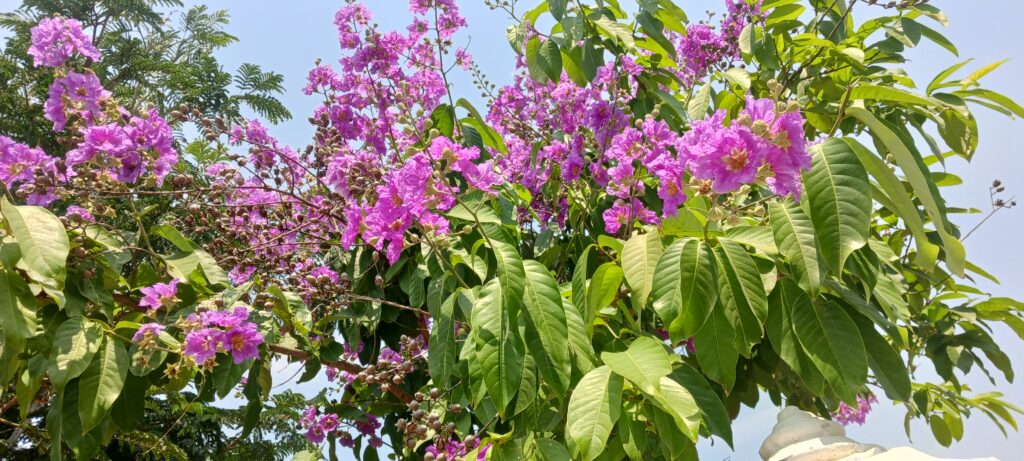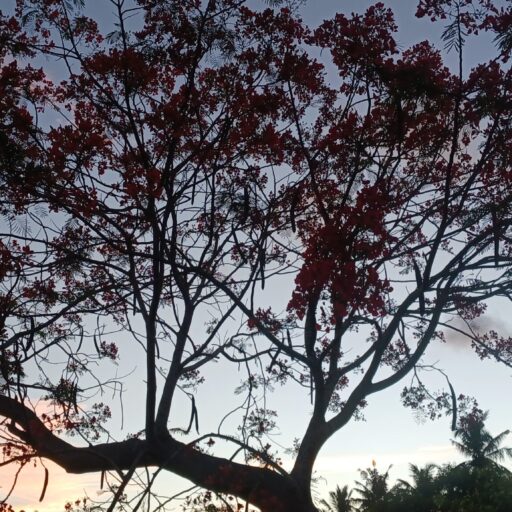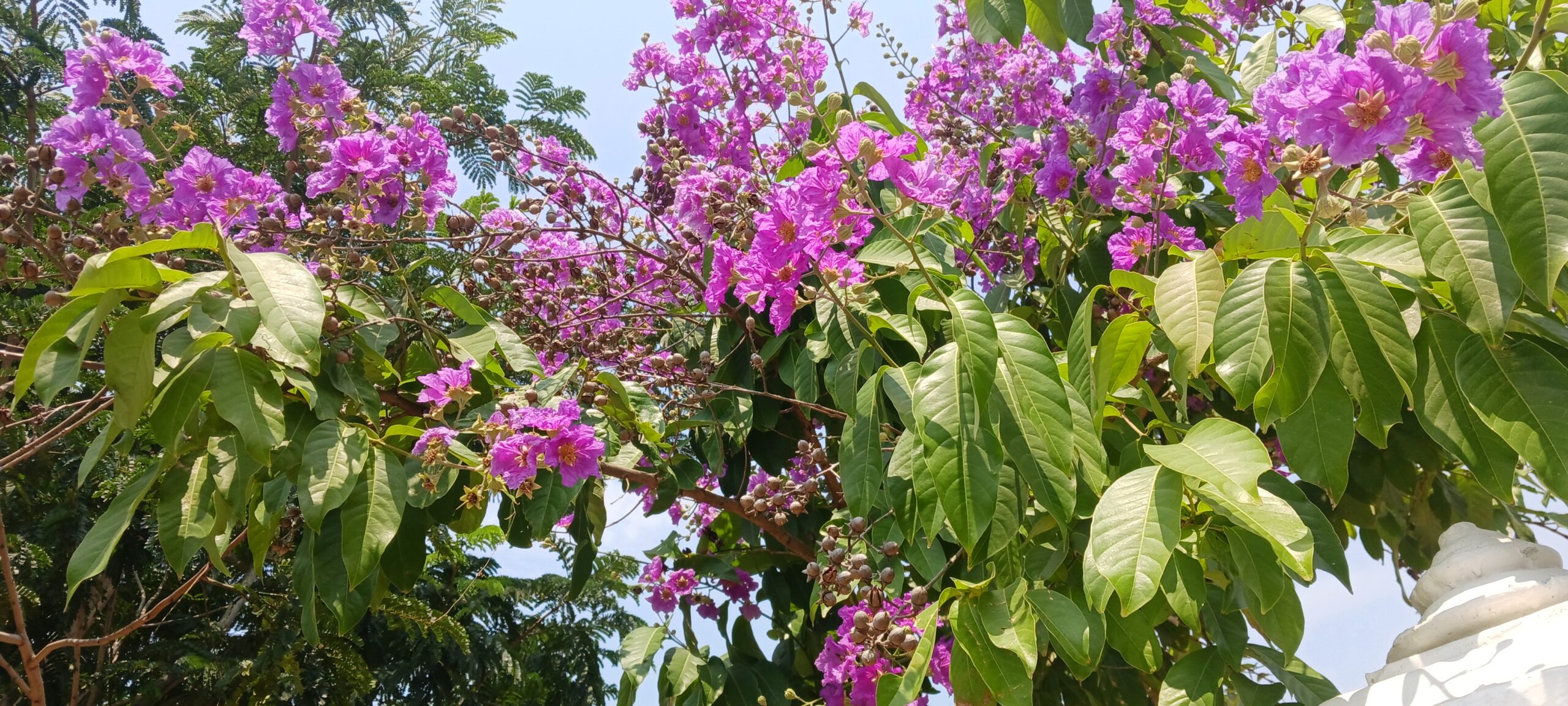Introduction

Patoli is a medium sized evergreen tree. its scientific name is lagerstroemia speciosa. This tree originated in Asia is most attractive when flowering. Lagerstroemia speciosa, also known by the common name “Pride-of-India”. It one of the well-known ornamental trees and is widely Cultivated in the gardens and planted on the roadsides. A profusion of large, bright pink to lavender blooms appears in dense, foot-long, terminal panicles from July to September, making this tree a spectacular specimen or street tree. This large, upright rounded, deciduous tree is clothed with dark green leaves which turn attractively red before falling in winter. It is a drought tolerant species which easily cared in the garden or landscape with really a low maintenance. It has dense and wide spreading root system. The Lagerstroemia speciosa is an incredible shade tree. Other than this, the plant has been used in agroforestry for erosion control and reforestation on the degraded hills in Java. This is one of only a few deciduous trees which grow in tropical and subtropical region of the country. Generally available in many areas within its hardiness range. “Pride of India” is also the state flower of Maharashtra.
Common Name
Ajhar, Jarul, Patoli, Ary, Pride of India, Queen’s Crape-Myrtle, Queen’s crepe flower, Taaman, Mota-Bondra, Banaba Plant.
Native
It was native to Asia-tropical and subtropical regions, India, Sri Lanka, Cambodia, Myanmar, Thailand, Vietnam, Indonesia, Malaysia, Philippines, Bangladesh, Japan.
Family
It is belonging to Lythraceae family.
Tree height
Lagerstroemia speciosa can reach 40 to 60 feet in height and a spread of 30 to 40 feet.
Stem
The bark of the Lagerstroemia speciosa is light grey to brown, smooth, mottled and fissured. It peels off at regular intervals in thin flakes.
Leave
The leaves are arranged opposite, or almost opposite, to one another, leathery, oblong to ovate in shape, glabrous with short petiole and measures 10-20 cm x 5-7.5 cm. and has prominent veins, especially on the dorsal side.
Flower
The flowers are in large terminal panicle, regular in shape, varying from pink to purple in color, measure 5.0-7.5 cm wide appears from July to September. The calyx is in green ribbed tube with 6 leathery sepal lobes and 6 lilac purple petals with wavy margins up to 3.5 cm long, attached between the sepals by short claws. The stamens are numerous, with purple filaments and golden yellow anthers. The pistil is simple with a long purple style of up to 5 cm long, a dark green stigma and a superior ovary. Older flowers occur at the base and younger ones towards the tip. The tree can start flowering as early as three years of age. Furthermore, a well grown tree may flower twice a year. Each flower lasts for only 2-3 days.
Fruit
The globose fruit is about 2 cm long with a spike at the tip. It is green-to-olive-green in earlier stage and on ripening it turns first brown and then almost black and woody. Being a capsule at maturity it splits into five or six segment to expose neatly packed seeds inside. Each seed has a wing at its tip to facilitate dispersal by wind. The seeds were collected from September- December.
Seed
The fruit is a capsule, which is dry at maturity and splits open to release the winged seeds. These seed capsules usually ripen in the fall and can be collected, dried and saved for sowing in spring. There are about 1,50,000 to 2,00,000 dry seeds /-Kg. But viable seed production begins at 15 years old. Seeds can store for at least 2 years in airtight containers at room temperature.
Soil preference
the tree prefer well drained soil and fairly fertile. it can tolerate wide range of soil type including sandy, loamy and clay soil. it can tolerate of alkaline soil but prefer a 5.5 to 7.5pH.
Pruning
Pruning is not necessary but is done to promote a desirable shape and remove any dead or diseased branches for better air circulation and light access. Regular pruning can also help maintain the overall health and vigor the tree. pruning should occur in early spring.
Habitat
It can be found in tropical and sub-tropical areas around the world. The habitat may vary from well drained to occasionally flooded but not peat soil. It will grow in full sun on a wide range of well-drained soils but is not salt-tolerant.
Uses
In India, the wood is used for railroad sleepers and the construction of furniture, wagons, and buildings. The wood is resistant to waterlogging and therefore is valuable for the construction of boats. The attractive bark is smooth, mottled and peeling. Timber is considered only next to teak in Myanmar.
Medicinal use
The roots were used as astringent, stimulant and febrifuge. It was also used for stomach problems. Tea of the leaves was used in the treatment of diabetes mellitus and for weight loss. The leaves, flowers and barks were used as purgative. Leaf decoction or infusion was used for bladder and kidney inflammation, dysuria and other urinary dysfunctions for cholesterol deduction, hypertension and diabetes. Poultice of the leaves was used as remedy for malaria, headache and cracked heeling by application over the lesions. Decoction of the bark was used for gastrointestinal tract disturbance, stomachache, hematuria and depression. The seeds were used as narcotic. Remember before using it for medicinal purpose it is essential to consult expert Ayurvedic doctor. this information is only highlighting the plants prioperties.
Propagation
Lagerstroemia speciosa most easily propagated by seeds. These seed capsule collected off the trees, dried in the sun and remove the shell carefully and saved for sowing. Generally, no pre-treatment is necessary for Lagerstroemia speciosa, direct sowing is usually successful. The most common method is planting of nursery seedling raised in polythene pot or hyk pots. Seeds are sown in mother bed in January- march and covered with straw, time of sowing depends on time of planting and size of plants required. Beds are watered cautiously by sprinklers or automizers, frequently but lightly. Germination takes place within 5-15 days when thatch is removed. Seedlings are pricked out into polythene pot when about 10cm tall, normally 4-6 week after germination. polythene pots are placed in sunken bed. Seedlings transplant easily from the nursery to planting site about a year when it attains a height of 60cm.Seeds should be sown in the shade, germination takes 15 – 25 days. After germination the small seedlings can be pricked out and transferred to container.
Pests and disease
Lagerstroemia speciosa plants usually not susceptible to major pest and disease problem. it is relatively resistant to pest and diseases.Regular monitoring for pests and diseases is important to keep trees healthy. If any problem is noticed, it should be treated immediately to prevent it from spreading.

